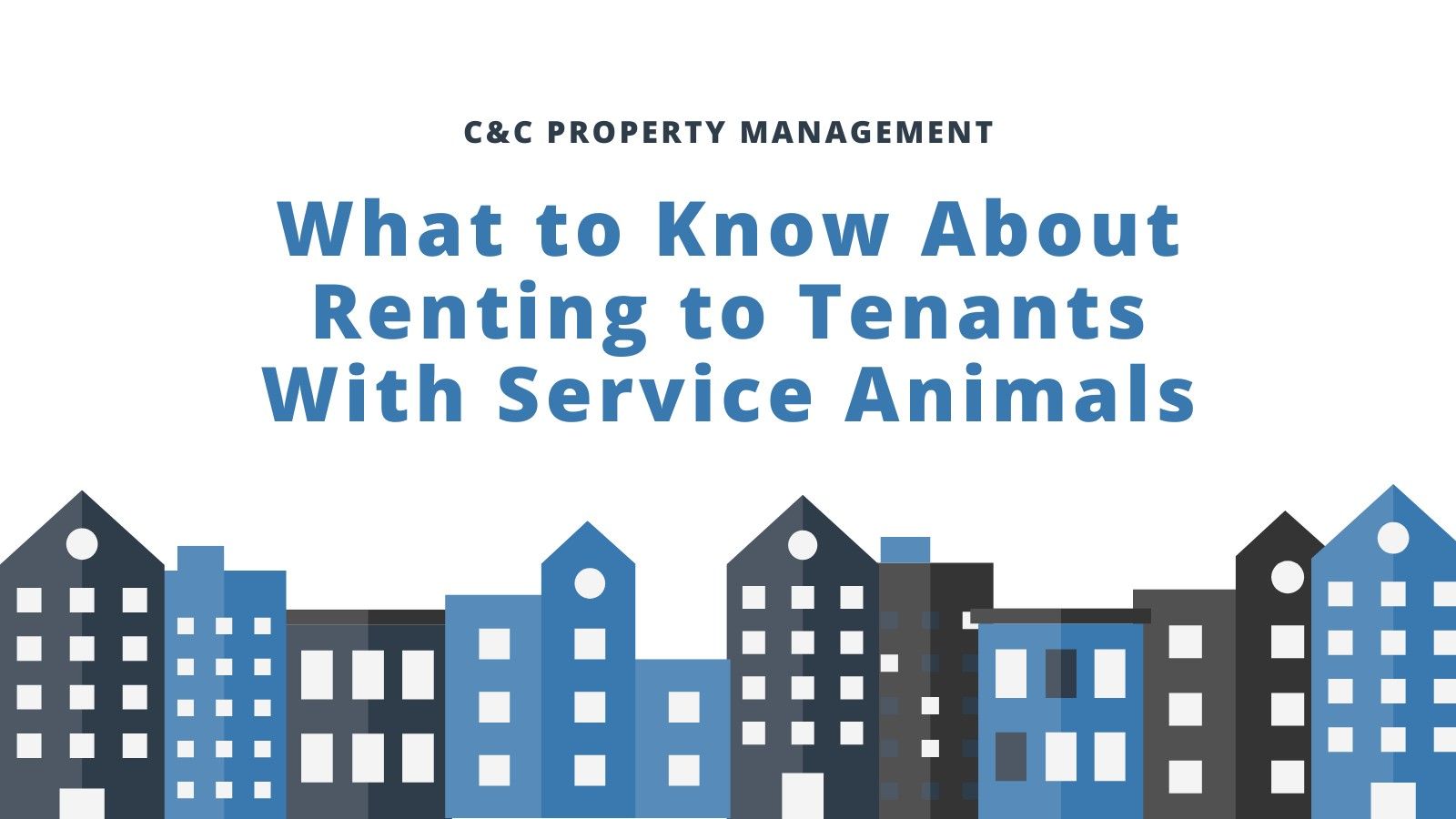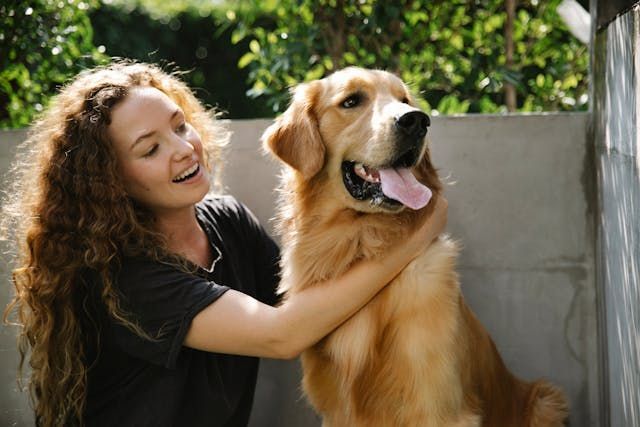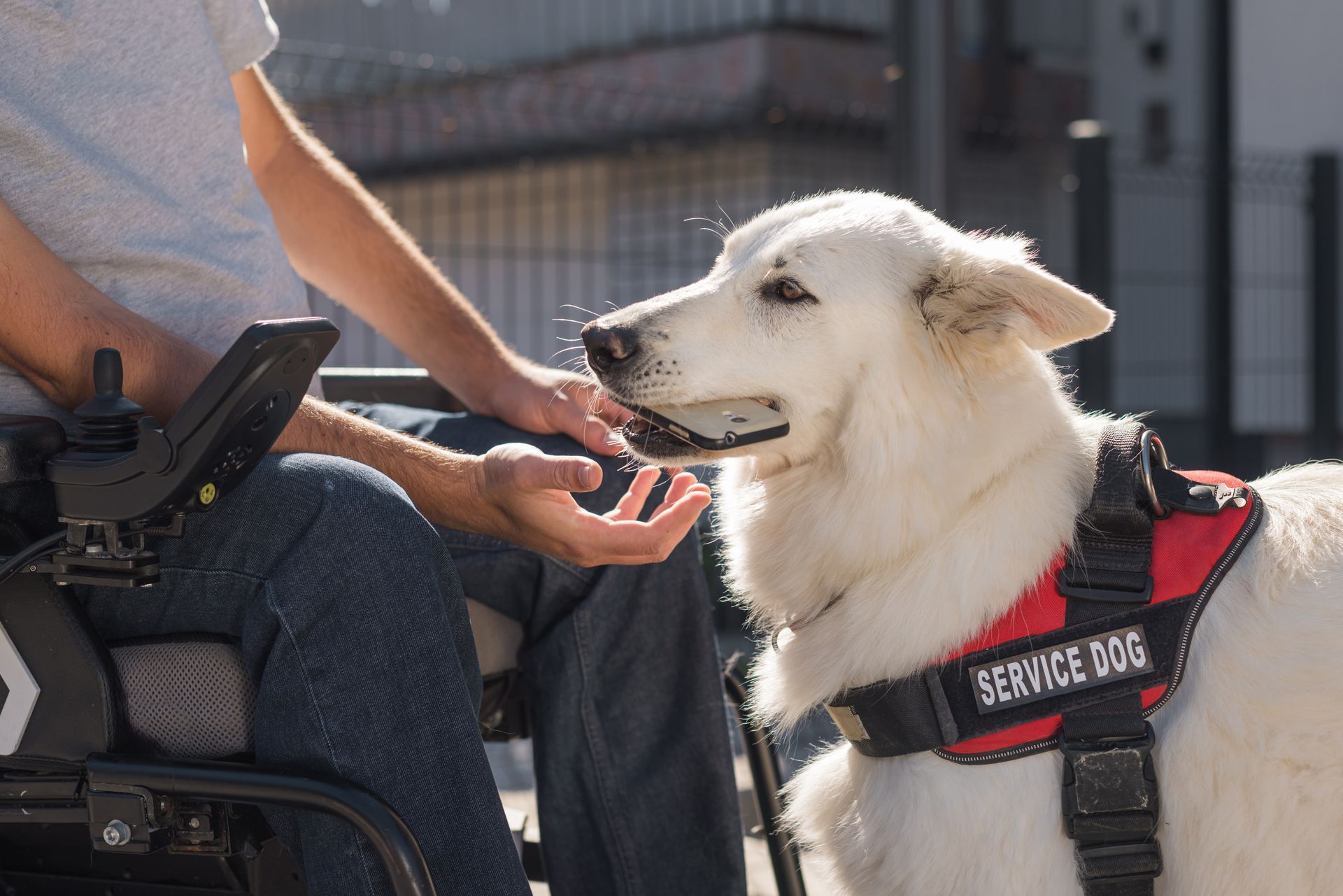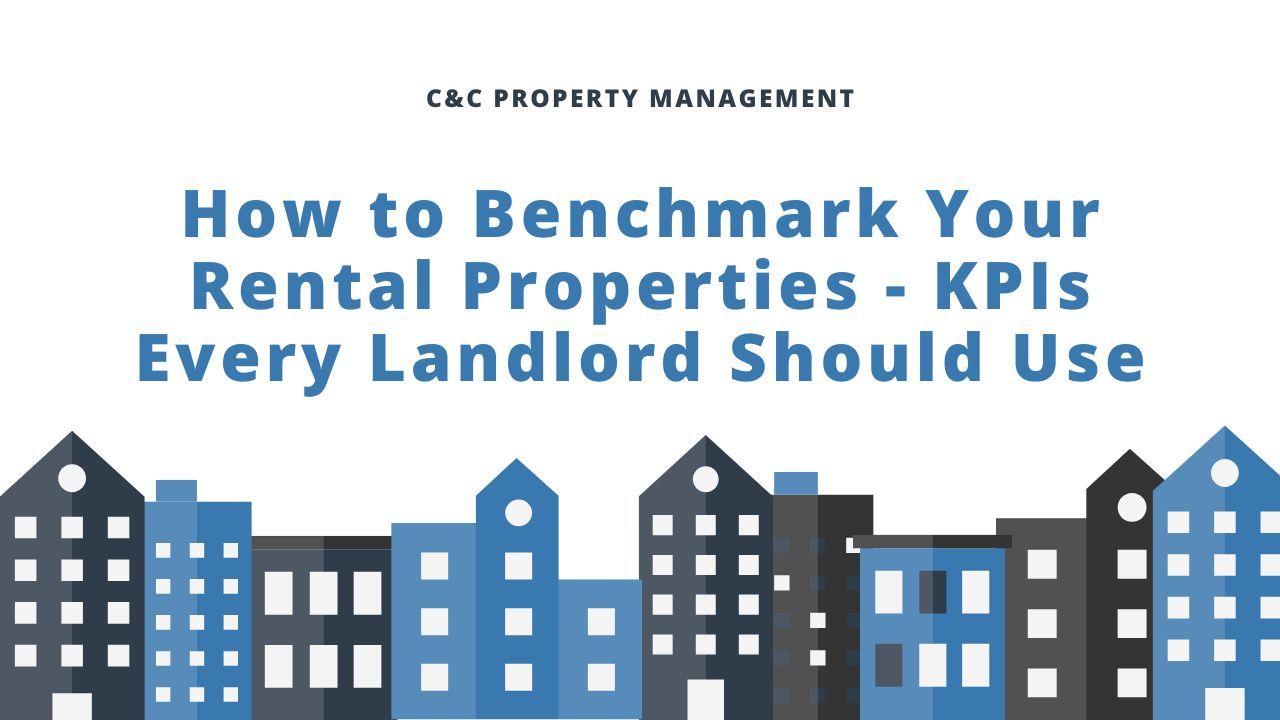What to Know About Renting to Tenants With Service Animals

Key Takeaways
- Service Animals Cannot Be Denied: Even with a “no pets” policy, landlords must provide reasonable housing accommodations under the ADA and FHA.
- Companion Animals Receive FHA Protections: Emotional support animals are not pets, and landlords must allow them in housing, though they do not have full public access rights.
- Landlords Have Defined Duties and Limits: Owners must waive pet fees and consider disability-related accommodations, while tenants remain responsible for care, cleanliness, and preventing damage.
As a landlord, you have the right to create your own pet policy on whether to accept pets into your property or not. But even with a “no pets” policy, did you know that you cannot reject a service animal? Certain federal, state, and local laws require that rental property owners accommodate service animals.
In this blog, our experts at C&C Property Management share everything you need to know regarding renting to tenants with service animals. Including the legal protections tenants with assistance animals have, types of assistance animals, and landlords’ responsibilities regarding service animals.
What Legal Protections Do Tenants With Assistance Animals Have?
If a tenant has a service animal, you have a duty to allow them reasonable accommodations to allow them to live with the animal in the unit. A reasonable accommodation is when a tenant requests a change in the rental policy to accommodate their needs.
The Federal laws that make this possible are both the Americans with Disabilities Act (ADA), and the Fair Housing Act (FHA). These define someone with a disability as one who meets any of the following conditions:
- A physical or mental impairment that substantially limits one or more major life activities.
- A record of such an impairment.
- Being regarded as having such an impairment.
If a tenant meets any of these conditions and has an assistance animal, you must provide them with reasonable housing accommodations. And if you need to determine the validity of a service animal, you can check HUD guidelines.

The Different Types of Assistance Animals
When it comes to assistance animals, landlords will generally encounter two main categories: service animals and companion animals.
Service Animals
Service animals are specially trained dogs that perform tasks directly related to a person’s disability. The training allows them to help their owners in very specific and practical ways, ensuring safety, independence, and improved quality of life.
Some examples of service dogs include:
- A dog trained to alert a person with diabetes when their blood sugar has dropped too low.
- A dog trained to assist a person with depression by reminding them to take their medication.
- A dog trained to detect the onset of a seizure in a person with epilepsy and take steps to keep them safe.
The key difference between a regular pet dog and a service dog is the professional training the latter receives. Service animals are carefully trained to perform their duties effectively, and they often wear some type of identification tag or harness. Under the Americans with Disabilities Act (ADA), service animals must be allowed to accompany their owners in nearly all public places.
Companion Animals
The second type of assistance animal is a companion animal, also commonly referred to as an emotional support animal (ESA) or therapy animal. Unlike service dogs, these animals are not required to undergo any specialized training. Their role is to provide comfort, companionship, and emotional support to their owners.

Companion animals are often used by individuals with conditions such as depression, anxiety, or autism. While they can play an important role in improving mental health and daily life, they do not have the same legal standing as service animals under the ADA. This means they do not have guaranteed access to public places like restaurants, stores, or parks where pets are normally prohibited.
However, under the
Fair Housing Act (FHA), landlords are required to provide reasonable accommodations for emotional support animals in housing, even if the property has a “no pets” policy. The only exceptions are situations where the animal would cause an undue financial or administrative burden, or if the animal poses a direct threat to others.
Landlord Responsibilities for Service Animals and Companion Animals
The FHA requires landlords to provide reasonable accommodations in housing for both service animals and companion animals. This means that tenants with disabilities are allowed to have their assistance animal in a rental unit, even if there is a “no pets allowed” policy.
Assistance-Animal Accommodations
As a landlord, you may be required to:
- Permit an assistance animal in the unit even if pets are not normally allowed.
- Waive pet fees, deposits, or pet rent, since assistance animals are not considered pets under the law.
- Allow tenants to use common areas of the property with their assistance animal.
- Consider reasonable requests related to the animal’s needs, such as designating a nearby area for the animal’s relief if practical.

Accommodations for Tenants With Disabilities
In addition to animal-related requests, the FHA also requires landlords to consider other reasonable accommodations or modifications that help tenants with disabilities enjoy their housing. These may include:
- Providing an assigned parking space close to the unit.
- Allowing rent payments by mail or through a caregiver if in-person payments are normally required.
- Adjusting payment schedules to match disability income schedules.
- Allowing a live-in aide, even if that would normally exceed occupancy limits.
- Approving modifications at the tenant’s expense, such as installing grab bars in the bathroom, widening doorways, or adding ramps.
Tenant Responsibilities When Renting With Assistance Animals
Assistance animals are not considered pets under the law, but tenants are expected to uphold the same standards of care and cleanliness as any other resident.
Tenants must:
- Keep their rental unit clean, safe, and sanitary.
- Properly care for their assistance animal, including controlling noise and behavior.
- Clean up after their animal in both private and common areas.
- Ensure the animal does not cause property damage beyond
normal wear and tear.
- Cover the cost of any repairs if damage does occur.
Landlords also have the right to address situations where an assistance animal poses a direct threat to the health or safety of others or creates significant property damage.
Bottom Line
There you have it. Everything you need to know about renting to tenants with service animals. Also, make sure to check for any additional rules at the state or city level for utmost compliance.
If you’re seeking reliable property management support in California, C&C Property Management is here to help. Our comprehensive services are designed to reduce stress and boost your investment returns. Contact us today to find out how we can assist you!








